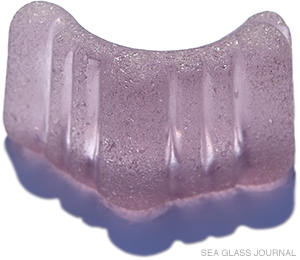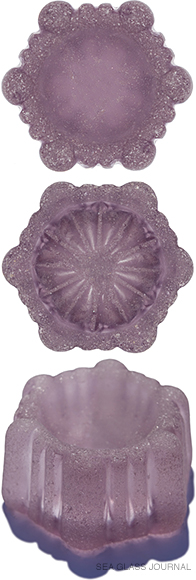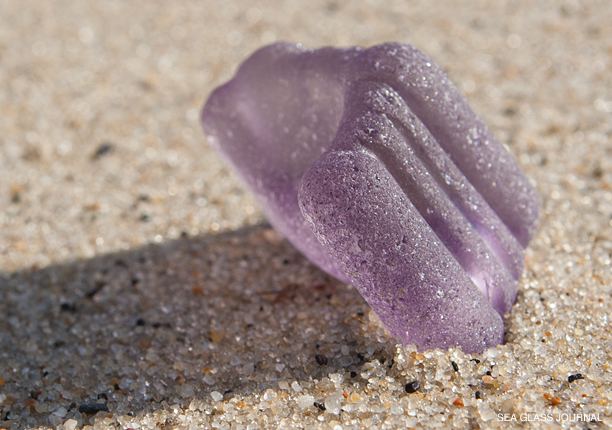The Sea Glass Shard of the Month: March 2014
Piano Insulator Segment

Sea Glass Specifications:
Color: Sun-colored Amethyst
Max Length: 75.7 mm (2.98")
Max Height: 45.7 mm (1.80")
Weight: 142.3 grams (5.02 oz)
Estimated Age: Between 100 to 120 Years
For this month we will look at a very unusual sea glass specimen found in a coastal tip (dump) in the southeast of England. Commonly known as a piano insulator it is also referred to as a piano rest, cup, or castor and was used primarily to insulate a wooden floor from the sound vibrations emanating from a piano as it is being played. Other secondary uses involved placing the rest under the legs of heavy furniture to protect floors from scratching.

These images depict what the sea glass piano insulator would have looked like originally.
Predominately made during the late 19th Century by English and South American glass houses these insulators were in common use until the middle of the 20th Century. Some of the companies that manufactured these insulators were well established glass houses like Percival Yates & Vickers, Sowerby Glass and UK Davidson. All include a maker's marks indicating their origins. Other insulators might not include such marks but might have embossed on the bottom the names of music businesses such as "Breyer House, Buenos Aires" and could be purchased cheaply as a way of advertising.
"This piano insulator is a great example of a sun-colored amethyst sea glass specimen..."
This piano insulator is a great example of a sun-colored amethyst sea glass specimen (see sun-colored amethyst sea glass for more information on this) which was originally clear glass which dates it to around the late 19th to early 20th Century. Glass piano insulators were also manufactured in many other colors including amber, blue, and uranium yellow or green.
The images on the left demonstrate (with a little help from Photoshop) what the glass insulator would have looked like in its original, unbroken form. Imagine what a great sea glass find this would have been!
Before coming across this sea glass gem, glass piano insulators were an unknown glass article to this author but with some research and a little luck their story was eventually determined. This certainly exemplifies that sea glass collecting is not only a hobby of beachcombing but also may involve curiosity and archaeological sleuthing which can lead to some amazing stories in the history of glass.

Keep up-to-date on all things sea glass... like us on Facebook!
Sea Glass Journal on Facebook






